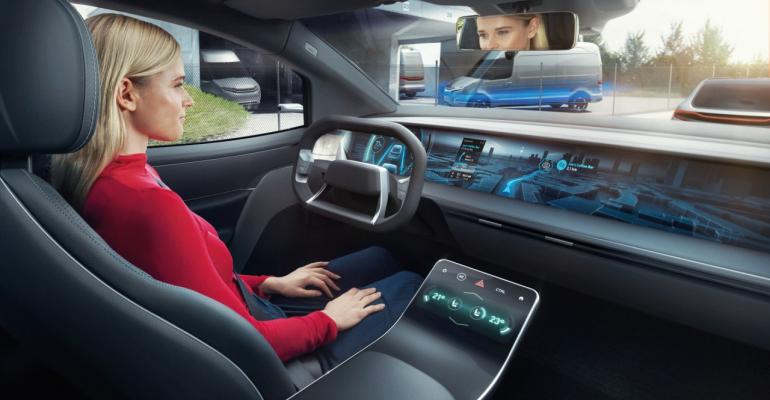Bosch will present a new video perception technology at IAA Mobility 2023 in Munich next month claiming a breakthrough in autonomous-driving capabilities.
Launching the system, the company also calls for an industrywide push for both software and hardware to be “agnostic” – able to be compatible with other automotive technologies.
The system is a modular, hardware-agnostic software package that can be used on various SoC (system on chip) applications. It sits on top of existing radar and new seventh-generation ultrasonic sensor arrays and its video sensors claim to offer a further way of sensing and understanding a vehicle’s surroundings in assisted and automated driving.
The image data captured by several sensors, such as new camera heads, are processed by Bosch’s software and initially made available for ADAS functions relating to driving and parking. Use cases include automatic braking when driving or reversing, convenience functions such as adaptive cruise control, active lane changing, park assist functions and automated driving on freeways, extra-urban roads and even city streets.
For the detection and classification of objects, the software relies on artificial intelligence technology such as deep neural networks. When training these networks, Bosch can draw on databases from around the world and in this way take account of country-specific and local requirements during development.
Presenting the system ahead of IAA at Bosch’s Tech Talk webcast, Sven Lanwer, head of the driver experience unit, explains its basic capabilities: “Video perception plays a key role in ADAS and for this, we are offering three modules.
“The first is the near-range module supporting parking functions. It consists of four cameras with images stitched together to support parking. The next module is the front video perception module, which is doing the same as a multipurpose camera, looking into the front which supports things like automatic emergency braking but with a much higher resolution up to eight megapixels, compared to the two- to three-megapixel resolution.
“Finally, the third module is used for the most advanced Level 2 and Level 3 automated-driving functionalities, which is the 360-degree surround video belt. This supports the most complex urban scenarios. All these modules used classic algorithms but heavily incorporating AI because that gives us the highest performance in object detection.”
Lanwer also calls for increased use of agnostic hardware and software solutions among automakers and technology suppliers.
“We can see a trend among customers to no longer opt for the complete package offered by a supplier but, instead, to increasingly request individual components that are compatible with rival products,” he says. “In this context, the call in the industry is for not just hardware to be compatible but for software to be hardware- and operator-agnostic as well.”
Multiple presentations of ADAS technologies by Bosch at the IAA will also include moveID, a project within its “Gaia-X 4 Future Mobility” technology family, which will hold a live demonstration with two electric vehicles.
The system will give the first public insight into the MOBIX app, which claims to allow users to park and charge anonymously at any location in compliance with the general data protection regulation. It will also showcase novel mobility services and business opportunities created by the use of decentralized technologies.





